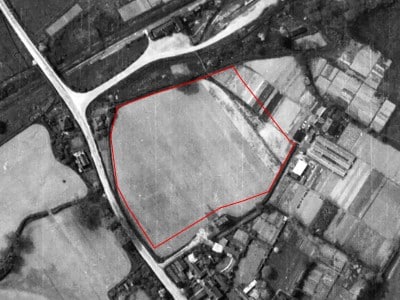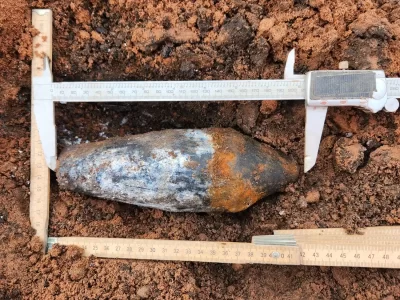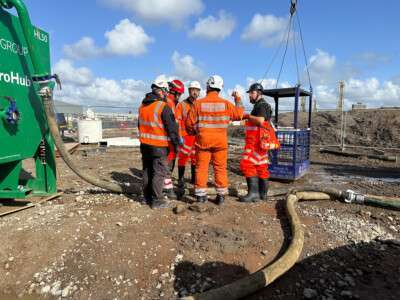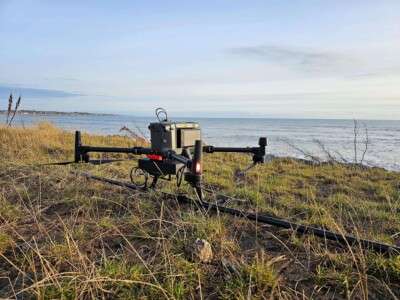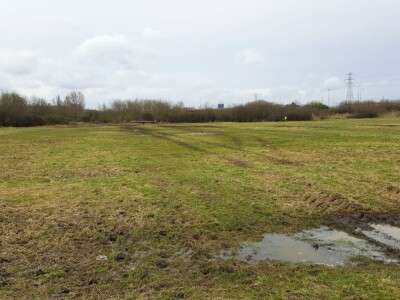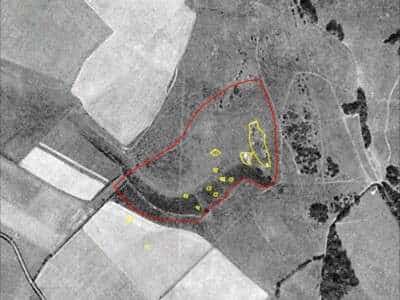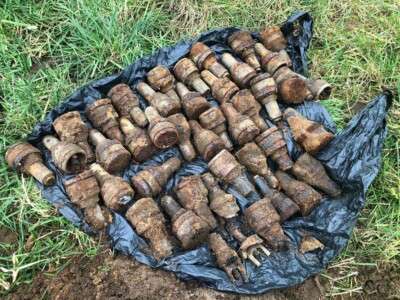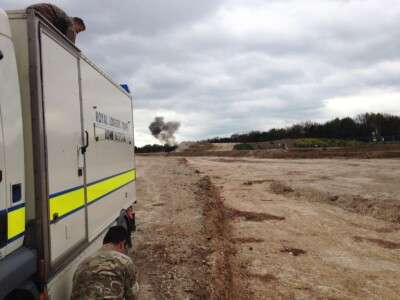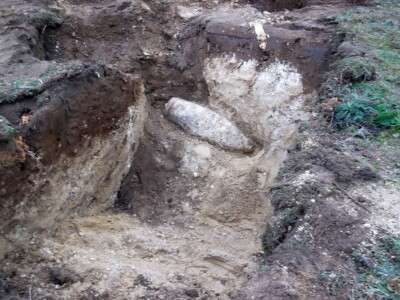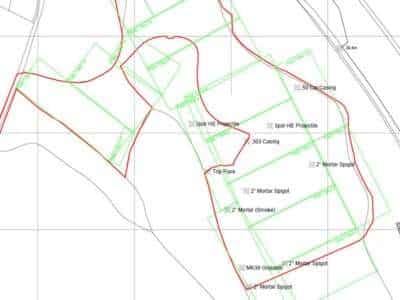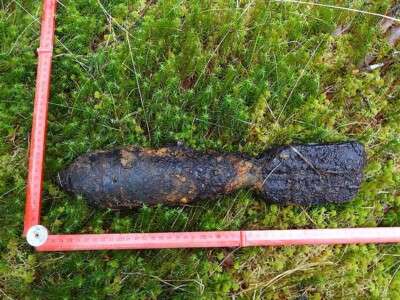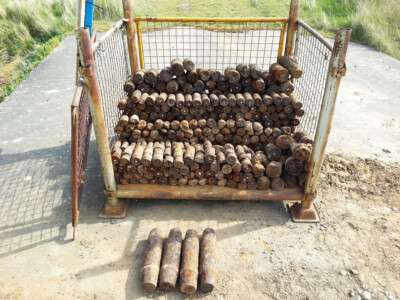Home » Resources » Case Studies »
Case Study Overview
Client
RMB Contractors
Location
Arlesey, Bedfordshire
Industry
Construction
Project Duration
May – June 2019
UXO Risk
‘Medium-Risk’ from Allied UXO
UXO Found
1 x Live 2-inch Mortar, 1 x Live No.36 Grenade
0.5 Hectares
Surveyed & Investigated
Challenge
In 2019, 1st Line Defence were commissioned by RMB Contractors Ltd to produce a Detailed UXO Risk Assessment for a cement plant site in Arlesey, Bedfordshire. Site works planned included investigatory boreholes, the removal of old concrete and the installation of a new water tank.
Research conducted for the risk assessment revealed that the site was formerly used to store ordnance during WWI, and was later used as an ammunition dump by the Royal Pioneer Corps during WWII.
Due to the ground works planned by the client, the site must be cleared of any UXO contamination to allow ground works to proceed safely for all personnel on-site.
Process
Stage 1 – Detailed UXO Risk Assessment
1st Line Defence undertook detailed research of the site and surrounding area, and there were a number of key findings:
Anecdotal sources suggested that the Portland Cement Works to the south of the site was involved in the storage of munitions, with anecdotal sources suggesting that ordnance storage took place in both WWI and WWII.
Archival research and local studies also uncovered an anecdotal reference from a local resident, who advised that in his youth a number of “bombs” had been found within the old cement works, and that after taking a grenade home – his parents notified the authorities and Army Bomb Disposal came out to make these areas safe. Book sources stated that munitions including aerial torpedoes and shells were stored at the cement works during the war, with local women then employed following the war to dismantle these items. Further anecdotal sources suggest that this munitions storage continued into WWII, with a silo within the cement works being used to store items.
A database of 33 Engineer Regiment explosive ordnance clearance (EOC) tasks recorded that at least nine separate tasks were undertaken in close proximity to the site between 1983 and 2001. A total of 1,085 live and 1,593 expended items of ordnance were recovered during these tasks. The accompanying grid reference for all these tasks was given as a point approximately 90m north of the site.
It is not recorded exactly what areas were covered by the tasks, but given the very close proximity to the site and the similar nature of the groundcover – it is quite possible that tasks were undertaken on/around the site.
Due to the sites previous history and ground works planned, the site was assessed to be at a ‘Medium-Risk’ of UXO contamination – and additional UXO risk mitigation services were recommended.
Stage 2 – Risk Mitigation Strategy
Based on these potential risk pathways and the risk from Allied UXO across the collective site, 1st Line Defence recommended UXO Watching Brief services to support the first few meters of investigatory boreholes – within the areas of the site where traditional survey methods were not feasible to use.
This methodology would cover all areas of the site that were being developed, and if any UXO-related items were discovered – they could be checked and identified immediately.
Stage 3 – UXO Support
During the UXO Watching Brief operation, several items of UXO were discovered, including a ‘live’ 2-inch Mortar round and a ‘live’ No.36 Fragmentation Grenade.
The ‘live’ Mortar round and Grenade was destroyed on-site using a controlled explosion by local EOD authorities, and any remaining UXO-related items were safely disposed of by 1st Line Defence.
Outcome
Following approximately two-months of risk assessments and ground investigations, the risk from UXO was reduced to as low as reasonably practicable (ALARP) – and the project was completed by June 2019.
Click on the following link to download a PDF copy of the Case Study for Arlesey, Bedfordshire.
Latest Case Studies
Do you have a project in Bedfordshire? Need advice but not sure where to start?
If you need advice about UXO risk mitigation in Bedfordshire, contact us today and we will guide you through the process.
Contact Us
* indicates required fields
